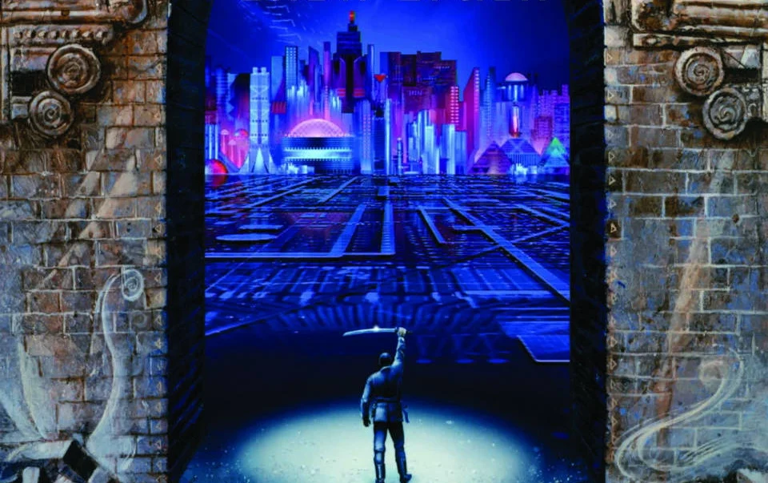A really useful guide to the metaverse, and the truth about Facebook
InnovationHello, and welcome to our latest blog. This one’s about the metaver- wait, come back!
Maybe you’re bored of hearing about the metaverse. Maybe you’re not sure what it is, and at this point you’re too afraid to ask. Maybe the metaverse is a bad thing. In this blog, I’ll be sharing the story so far, and pondering some of the outstanding questions out loud. I’ll also do my best to make it interesting. The future of the internet is at stake, so… Shall we?
The History of the Metaverse
In 1989, Tim Berners-Lee invented the web. It turned out to be a pretty big deal.
When the web was founded, it resembled traditional media models in some ways: To broadcast or publish, you needed specialist knowledge and specialist tools. The web was open for business and had incredible potential from the get-go, but the average user was more likely to consume content than to produce it.
Then, in the early 2000’s, the web had its first true revolution. Dubbed “Web 2.0”, it saw a shift away from the old media model of there being any separation between publishers and consumers - everyone could be both. Blogs, wikis, social networks, and simple (rather than specialist) tools allowed everyone to not just read the internet, but to carve out their own portion of it. Most of us are writing on the internet and publishing our thoughts to this day, although it has become very centralised around a few particularly big platforms like Facebook and Instagram, owned by a company formerly known as Facebook and now called Meta.

Twenty years on from Web 2.0, and with decades of complexity added to the web that have allowed us to push this platform further and further away from traditional hypertext, some have begun to wonder aloud whether a new digital revolution is on the way. To some, this revolution is Web 3.0, a dream of a new, more decentralised internet. To others, like Meta founder Mark Zuckerburg, the revolution is about shared online space called The Metaverse. We’re going to focus on the latter.
The term Metaverse actually dates all the way back to 1992, first coined in a prescient science fiction novel called Snow Crash. It describes an evolution of the Internet that allows people to explore a virtual, three dimensional space: Rather than reading words and looking at photos on a 2D page, you could explore information in a fully-realised space that lets you walk around.

This is where videogames come in. In 1996, Super Mario 64 brought 3D gaming to the masses. Adjacent to the development of the web, people began using some videogames as online social spaces, and in the years that followed, some of those became beautiful 3D worlds. Dreams of the metaverse took an even firmer root. Games technology and the open platform of the web have been on a collision course ever since.
3D spaces are now extremely common in games, a default expectation among the biggest titles in the industry. And as the web has become more advanced via complex JavaScript libraries and innovations in browser technology, 3D spaces have become possible on the web too. Virtual reality is a burgeoning part of the games space, and in some ways is now also possible on the web. But so far, most attempts at the metaverse have eschewed the web altogether.
For an example, look no further than Second Life. Invented in 2003, it shares many characteristics with a massively multiplayer online videogame, but lacks some elements that you might expect to see in a game: It has no challenges, no win conditions or conflict. As a virtual space, Second Life allowed users to represent themselves digitally, attend virtual lectures, and trade in digital real estate. Most users don't explore it via virtual reality headsets for complete immersion, but it is a virtual world and, by many definitions, a potential metaverse.
Despite a significant amount of interest, attracting a million users in 2013 before the community growth started to subside, Second Life never became a truly mainstream alternative to the internet as we know it. Other games, like Minecraft, Roblox and Fortnite have achieved massive success and allow many users to inhabit a shared social space - and some games, like VR Chat, even make this behaviour a fully immersive experience with a headset. But all of them remain siloed - separate networks with their own rules, characteristics and features.
Outside of games, "metaverse businesses" trade in other software that emulates games, like Second Life. They're often focused around having business meetings in virtual space or the like. As yet, none have gone truly mainstream, and most are separated experiences, just as much as games are. You launch separate software for each one.
They’re yet to formally announce how it will work, but it is broadly expected that Meta (the newly named Facebook company) will launch their own attempt at a “metaverse” in the near future. It’s unclear whether this will be a restricted experience or an attempt at an open platform that others will integrate with. The answer is likely to be "a little bit of both" - Meta needs content creators and can't do this alone, but they will want to control the pie, even if they don't end up eating every single slice themselves.
Despite the many problems associated with the web (rampant misinformation, abuse, etc), one thing it has always been good at is being un-siloed. Users move from website to website, created by different entities, with ease. Any true metaverse needs to replicate this behaviour, which means ultimately there are two paths ahead for the ‘verse: Duplicate some of the web’s core principles, or, perhaps more simply, build it on the web. Currently, when people say Web3, they’re usually talking about some kind of brand new blockchain internet. But maybe this idea is what Web 3.0 should really be about: A logical extension of our increasing investment and reliance in online spaces.
But how close are we, really, to this goal? Is it even a good goal?
For meta or worse
A metaverse makes a good setting for a novel, or a film, because it is visually exciting and an arresting concept: Worlds beyond your own, waiting to be explored. But while shared social online spaces are here to stay, there is considerable, reasonable doubt over whether any true metaverse will become the primary way we use the internet.
For one, consider whether a 3D space is actually the best way of receiving, consuming, and interrogating all kinds of information. While it is obviously the best way to showcase things like 3D art, is it the simplest, most user-friendly way of say… Booking a doctor’s appointment? Shopping? Showing people pictures of your food? Browsing videos?

None of these are unsolvable issues, but they do present new challenges that existing 2D implementations have mostly solved. Any successful metaverse space will need to find ways to not just wow users with 3D space, but offer 2D space to accomplish things “the old way” too, or invent new ways that feel just as intuitive. It’s no small order. One of the potential reasons people left Second Life was that it was just easier to do this stuff elsewhere. Having to walk around a 3D space to navigate was harder than clicking on what you wanted to consume from a simpler 2D directory.
Many will argue that a true metaverse will need to be explored in novel ways - not with a mouse or even a standard game controller, but a virtual reality headset and technology like haptic gloves. Again, in movies, this is very cool. In practice, it’s potentially problematic. Lugging that stuff around with you so you can check Twitter while you’re on the bus isn’t appealing. High technology costs continue to be a barrier to entry, which limits your metaverse audience. And does anyone actually want to wear a headset for as many hours as we use the internet today?
So it probably also stands to reason that a successful metaverse will need to be highly adaptable, to a range of user inputs and potential viewing devices. This makes the interactivity challenges exponentially harder too. If you figure out a brilliant way to make browsing videos easy with haptic gloves, but you need to cater to people who don’t have gloves, then everything needs multiple implementations.
In terms of viewing devices and user inputs, the web has gone through similar changes before. The iPhone heralded an era of so-called responsive web design, which continues to this day. Web developers now routinely cater for not just computers, but touch devices of wildly varying size. A web-based metaverse would take this to the next level, adding multiple additional layers of input potential, viewing potential, and of course, consideration for the third dimension.

And then, you have the bandwagon effect. For some, it’s not enough for the metaverse to be a socially shared open network of space. For some, it has to be powered by an anarcho-capitalist cryptocurrency. For some, blockchain technology must also be used to ensure that this brave new world replicates the scarcity of physical objects in our world, because… Well I don’t really know why you would want that to be honest, but some people clearly do. These aspects are particularly popular with people using the term Web 3.0, or web3, at the minute.
Before the metaverse arrives, someone else will invent something else new and controversial, and people will insist it’s an essential part of the metaverse too. Because the definition is fluid, the metaverse comes with baggage, and the nature of that baggage changes every year. Personally, I don’t see cryptocurrency, or NFTs, being a significant part of the concept in the long term. Those concepts will live and/or die on their own merits, folding into the ‘verse if successful and being chopped away like weeds if they become irrelevant. But their presence in the here and now does get in the way: a distraction that could encourage some early adopters but discourage mass market buy-in.
Also, just a thought here folks, but… Most fictional stories about the metaverse are dystopian. For some reason we seem to forget that the depictions of this thing we all want are actually usually trying to warn us against creating it. The metaverses in stories are dominated and subjugated by big media companies, rife with privacy issues and abuses, and horrible places to live. It’s like watching Terminator 2 and coming away thinking “You know, Skynet is a great idea. Let’s get someone working on that!”.
If we’re going to invent the future, can we please be careful?
Is the metaverse coming?
At this point, I’m going to deviate from established history and thought-provoking questions and simply talk about my own expectations for how this space might evolve. For some, the answer to the question is: “It’s already here”. I think that’s a fair enough comment to make. Second Life, arguably, is a metaverse. Roblox could be said to be a metaverse. But I would also question, are they the metaverse?
The people behind Facebook clearly believe that there is going to be a dominant, metaversal platform. They want it to be theirs. And maybe it will be. But when I look at this arena, and take into account the history of the web, I don’t see it as being something Facebook will own. The people who can really invent the metaverse - a truly networked, open online space - are the people who run web browsers.
At the fringes of the www, websites exist which could be considered metaverse nodes. For an example, I look at the growth of something like Dreamwave, which has powered all kinds of 3D spaces on the web, from The Game Awards Live Experience, to an Xbox-themed museum. They support positional audio, multiple control methods, and even virtual reality headsets if you prefer. This kind of boundary pushing, and others like it, are the basis by which the web gradually changes.
With enough support from developers (and crucially, consumers, who ultimately dictate most of what developers do), the likes of these shared social spaces could become more commonplace on the web - alongside all the other incredible, vast content we have on it right now. Perhaps it will be something you toggle on/off depending on your desire for 3D that day. Perhaps enough interactivity problems will become intuitively solved, so that 3D becomes the default option over time.
“Interesting things happen along borders — transitions — not in the middle where everything is the same.”
— Neal Stephenson, Snow Crash
And when those experiences are commonplace, on the web, standards tend to emerge. Some of the behaviours, functionality, and features will become part of the web specification and gradually become part of Chrome, Safari, and other browsers yet to be invented. New norms develop, encouraged by vendors, until most destinations offer it. Talented animators, artists and 3D programmers will very suddenly have a new field to work in, perhaps even one a little more stable than the volatile games industry. Games, meets the web, meets users, and it’s everywhere.
Et voilà. That’s the metaverse, right? The real metaverse was the websites we made along the way. Because they’re more involved, fulfilling and interesting now, but always stayed true to their principles. Principles on which the web changed the world the first time around. And the second. Made for everybody. Based on shared standards and ideals.
A true metaverse, whatever it means to you, may be a long way off. It may never happen. But I do see a world in which 3D, shared, social spaces can become a much bigger part of the web as we know it. Let’s get started?

